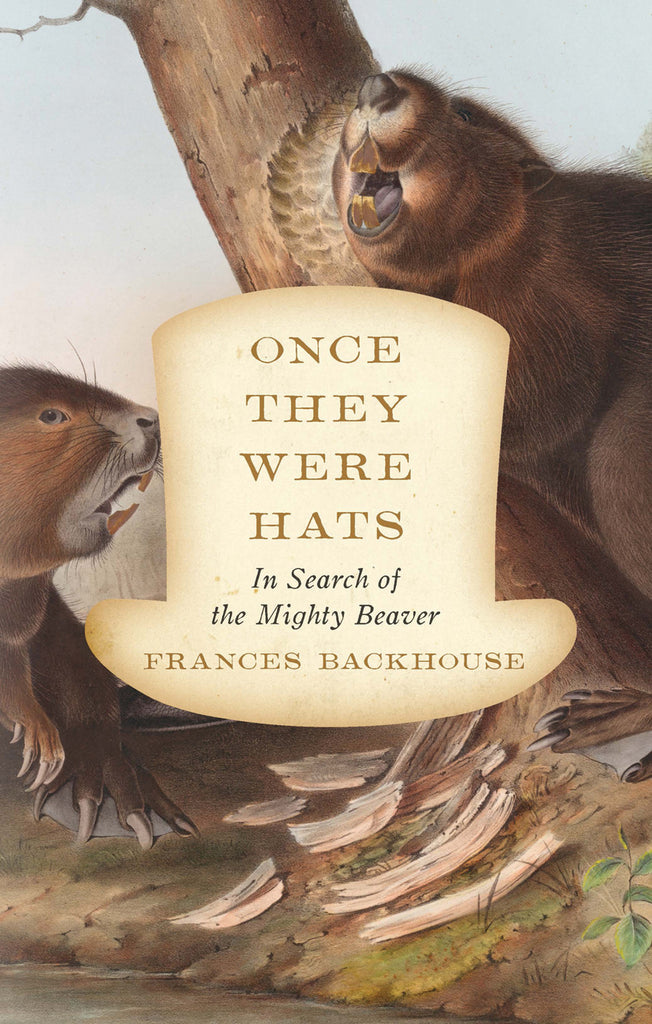 Looks like Frances Backhouse book has hit the Canadian market in time for the holidays and is making quite an impression. I hope she sells many, many copies! I’m imagining Christmas morning all around the hemisphere is filled with happy fathers, grandmas, CEOS and science teachers reading about beavers over their morning coffee.
Looks like Frances Backhouse book has hit the Canadian market in time for the holidays and is making quite an impression. I hope she sells many, many copies! I’m imagining Christmas morning all around the hemisphere is filled with happy fathers, grandmas, CEOS and science teachers reading about beavers over their morning coffee.
(Mind you, it would be great if she had a few extra copies lying around left over to donate to the silent auction at the beaver festival.)

Backhouse plots an absorbing itinerary that takes the reader on a tour of beaver habitats, as well as stops at a fast and furious Toronto fur auction and a visit to Smithbilt Hats, the legendary Calgary maker of western headwear. Among Smithbilt’s creations is the “Gus,” worn by Robert Duvall’s character in the series Lonesome Dove. Today, you can buy a wool version of the Gus from the company’s website for $110, but the highly prized, incomparably durable, full beaver model will run you $1,000. Sounds steep until you consider the guarantee that, “Once you get one, you’ll never need another.”
Most importantly, Backhouse identifies the beaver as a “keystone species.” By that definition, the beaver is “central to how a particular ecological community functions.” As such, its “effect on other animals and plants is disproportionately large.” Looking forward, the beaver’s positive impact on hydrology and water conservation could lessen the impact of drought caused by climate change. While not presented as a panacea, a strong case is made for how a “détente” between Homo sapiens and Castor canadensis can work to the benefit of both.
Once They Were Hats is deeply, enthrallingly, page-turningly fascinating. Backhouse plays two roles in Once They Were Hats: narrator and historian; in one chapter she may be investigating the evolution of the beaver species — visiting the Canadian Museum of Nature’s warehouse to look at some whittled, wooden evidence of prehistoric beaver-like animals — and in another she is describing through dialogue her visit with a Native elder, whose Deisheetaan clan held the beaver as a crest animal. It’s in this way that Once They Were Hats is both a reliable source of scientific information and an interesting anthropological text, drawing two parallel lines through Canadian history: one human, one beaver.
Biologists began to redefine the beaver’s ecological significance — which is as or more interesting than its historical one. Beavers, like few other species, dictate their environments: their tendency toward deforestation has informed the evolution of many plant species, and the dams they build affect waterways and irrigation. They literally transform the landscape: One wetland scientist late in Once They Were Hats tells Backhouse that the near-extinction of beavers “fundamentally changed the way watersheds operate.”
How exciting for a beaver book to be heralded in this way! Congratulations Frances, and I hope it continues to generate adulations. I’m always especially thrilled to see folks talking about beaver benefits in the press. I would of course assume that this meant great things for beavers if I were not SO old that I remember the reviews of Glynnis Hood’s book that pronounced beaver as an “eco-saviour” and how dizzying that glorious inevitability seemed at the time. I was naive enough to write about it as “the New Gold Standard” in 2011, because I was sure the world’s attitude toward beavers was going to finally change at any moment.
Not so much. I guess Canadians are happy to celebrate beaver at regular intervals – just so long as they can keep killing them.
Kudos also to our good friend Robin Ellison from Napa whose lovely photos from the Tulocay beaver pond graced not one but two months of 2016 RCD calendar! A fine kit and a very regal pond turtle. You realize of course, that once adorable beaver kits adorn the watershed calendar the birds and otters are going to have to fight for space. Expect more grand beaver photos next year. The calendar isn’t for sale, but if you make a donation I’m sure they’ll let you pick one up at the RCD office (1303 Jefferson St, Suite 500B, Napa).
Bonus points for putting the beaver on my birthday month.


 Someday our educational video will air in classrooms everywhere. Mark my words.
Someday our educational video will air in classrooms everywhere. Mark my words.



 Looks like
Looks like  Hot dam! Beavers — extremely weird, and essential to who we are
Hot dam! Beavers — extremely weird, and essential to who we are






































